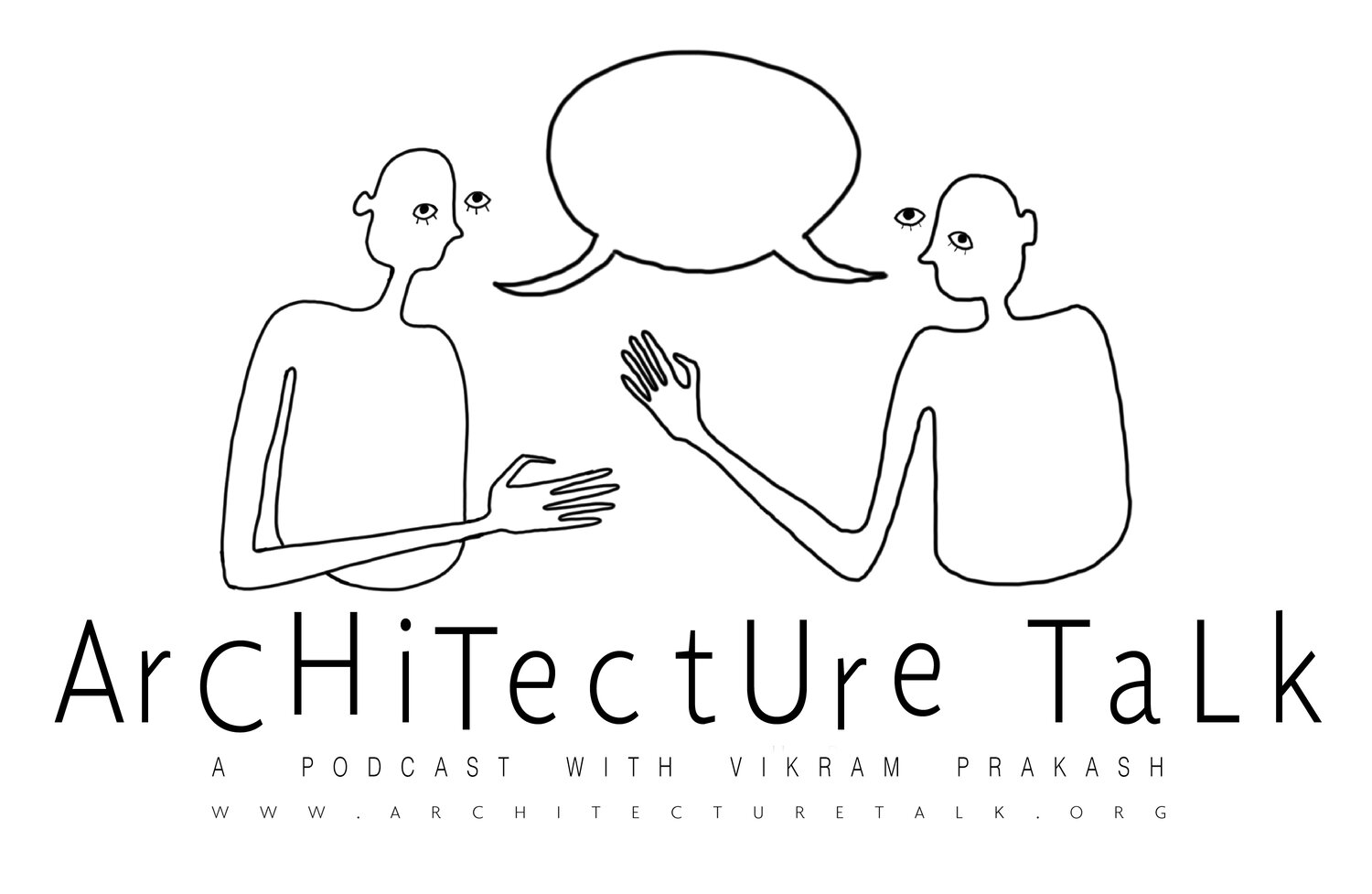97. Reissue of AITC: The Medicalization of Space with Michael Murphy of MASS Design Group
Original drawing by Tori Haynes
“Suddenly, every space has become a medical space…[this is a] paradigm shift where each one of us is now intimately aware of the potential threat of the built environment around us. It’s a radical moment that we are undergoing as a society and one that has potential significant risks and threats…but also potential optimistic futures…”
- Michael Murphy
What can architecture do in the time of a pandemic? What is an architecture of medical necessity? This week, we talk with Michael Murphy of MASS Design Group to discuss architecture in the time of COVID-19.
Timestamp Outline
3:00 Vikram asks Michael about his experiences during stay-at-home orders.
4:57 “How do we protect our family?” MM
5:45 “More and more studies are showing that aerosolization is part of the contagious pathway of the disease so the movement of air turns out to be quite crucial to managing or coping with, or reducing infections of COVID. Air mixing, air movement, cross-ventilation...all these things are turning out to be essential for our strategy for infection control.” MM
7:10 “Suddenly every space has become a medical space.” MM
8:50 “What are those spaces that are most potentially contagious…[we need to] increase our own spatial literacy of what spaces around us are not protected.” MM
10:20 Three scales of infection control: 1) The personal - PPE, putting a mask on; 2) The environmental, or the building itself; 3) The Institutional - control of separation, flow of large groups of people, etc…
12:00 “There is going to be a change in how we are thinking about public space...and possibly some change in rules and zoning...the question is: in what ways is this more of a health conscious or health literate relationship to public space? How can that be a progressive thing and in what ways do you think it might be more dangerous or socially constraining?” VP
15:20 “When you look back at history, the built environment has been shifted and shaped by other epidemics and I think we should expect the same with COVID.” MM
15:40 “One of the challenging and potentially threatening things that we will see (and are already seing) is an inevitable increase in the surveillance infrastructure and digital surveillance infrastructure that has now proliferated around our lives and is now taking hold...While that might keep people healthy, it does introduce all sorts of civil liberty questions.” MM
16:20 Prison decarceration
16:48 “E”carceration is the new Jim Crow (Michelle Alexander)
17:00 Is there a positive outcome?
18:45 How do we build a culture of regenerative architecture?
19:40 “Access to fundamental rights is of course completely hindered by many of these inequities that these systems are advancing, but certainly the built environment is one of those systems.” MM
21:15 “The sustainability conversation has been about operational carbon...about the performance of the building...but, embodied carbon is the conversation that we need to be having more aggressively. What is the cost of the extraction of these materials? What is the cost of not designing to the climate around us, of being reliant on mechanical systems in order for the buildings to breath?” MM
23:30 “What is your sense of North America’s architectural design preparation for dealing with epidemics?” VP
25:25 “I think, if you wanted one measurement, that should really shock us and reveals how unprepared our infrastructure of hospitals was to manage this disease is looking at how sick health works are getting. 20% are getting infected…This suggests that the environment that they are in is not able to be decontaminated fast enough to cope with the amount of patients that are coming in.” MM
28:30 What does a pandemic-resiliant infrastructure of the future look like?
31:00 Liberia Health Infrastructure Standards
32:10 “What are the core design principles that you adopt in hospitals and medical facilities particularly in Africa or elsewhere that you think are prepatory for epidemics?” VP
32:40 “Each epidemic teaches us something new about infection control protocols and whether they are appropriate or need to be amended…” MM
34:45 “Hallways are kinda the enemy.” MM
36:45 TEDTalk
37:00 discussion of design pedagogy
41:10 How do we practice and Why do we practice?
47:00 “Architecture begins in the space right outside the body” VP
49:00 “What scale are we talking about: scale of the body? Scale of the neighborhood? Who are we serving? What communities are we working with? We have to clarify which scale we’re talking about…” MM







